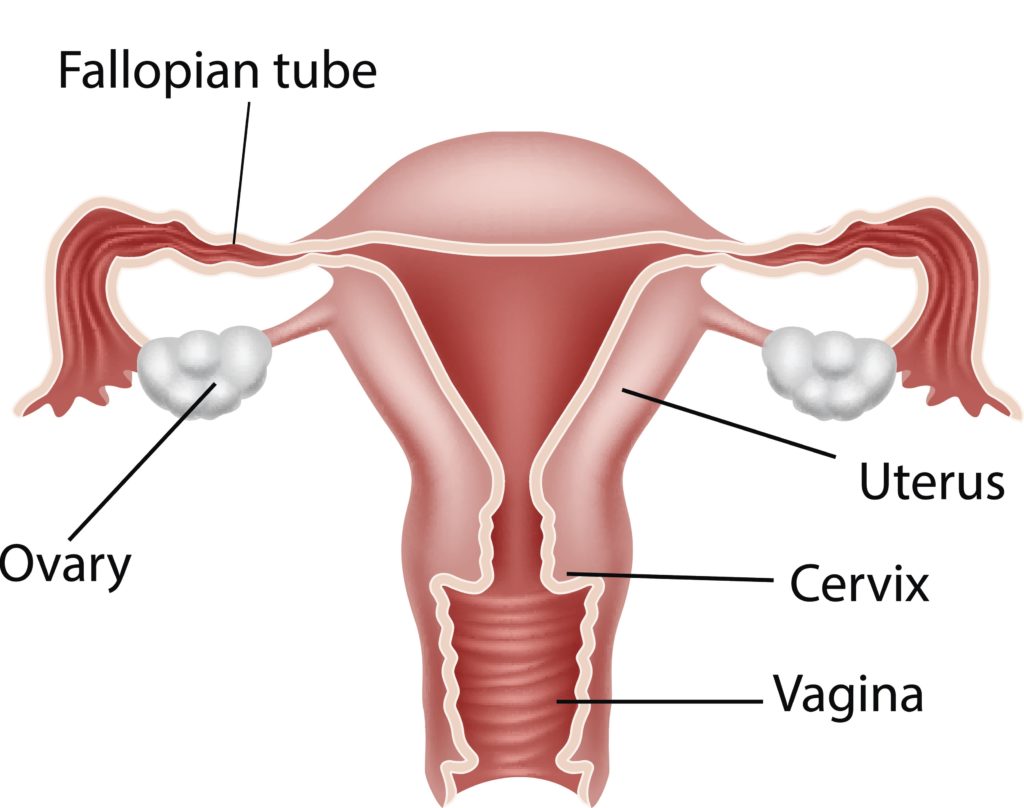Sexual Anatomy for People with Vaginas
Understanding your sexual anatomy and how reproduction works is an important part of getting to know your body! Your genitals (or “private parts”) play an important role in sex, pleasure and reproduction. It’s completely normal to be curious about your genitals—especially during puberty.
Here, you’ll learn about the sexual anatomy and reproductive system of people with a vagina and uterus and the role of the different sex organs in reproduction. These links explain what the menstrual cycle is, and how pregnancy begins.
Every species has the ability to reproduce, which means to make other living things like themselves. Human beings can reproduce (or have babies) once they go through puberty and their reproductive systems mature. Learning how reproduction works will help you understand how pregnancy happens (and how to avoid it).
Genitalia
People with a vagina and uterus have internal genitalia and external genitalia. The external genitalia are the parts you can see, while the internal genitalia are located inside your body.
Your external genitalia are also called your vulva. The vulva consists of the labia, the clitoral glans (aka the tip of the clitoris), the mons pubis, the vaginal opening, and the opening to the urethra.
Your inner genitalia are: the vagina, hymen, cervix, uterus, fallopian tubes, ovaries, and internal clitoris.
A closer look at the vulva
Labia
The labia are the “lips” that surround the opening of the vagina. There are two sets: the labia majora (outer set) and the labia minora (inner set). After puberty, the labia majora will be covered in pubic hair. You can see the labia minora if you pull apart your outer labia a bit. They do not have pubic hair on them. The labia protect the vagina from bacteria from the outside world. They also become more sensitive when you become aroused (or turned on). This can make sex feel more pleasurable. Everyone’s labia look different. Some are dark, some are pink, some are wrinkly, and some are smooth. Sometimes, the inner labia are longer than the outer labia. Other times, it’s the opposite. This is all normal and completely ok! Every body is different.
Clitoral glans
The clitoral glans is the part of the clitoris that you can see. It sits a bit above the vaginal opening and urethra, at the top of the vulva. People sometimes describe the clitoris as a button, even though its size, shape and color vary. The clitoris’s only purpose is sexual pleasure, which is pretty amazing! If you have a clitoris and touch or press on it, you may feel a tingly feeling. Sometimes, touching the clitoral glans directly can feel overwhelming or uncomfortable. This is because the clitoris has over 8,000 nerve endings. That’s twice as many as a penis has!
The glans is partially covered by the clitoral hood. You can think of the clitoral glans as the tip of the iceberg of the actual clitoris, which has a whole internal structure you can’t see. Many people with clitorises need direct clitoral stimulation in order to have an orgasm (or come), but every body is unique and different.
Mons Pubis
The mons pubis (sometimes just called the mons) is a fleshy mound of skin at the very top of your vulva, just above your clitoral glans. After puberty, it’s covered in pubic hair. Usually, pubic hair will start growing here first and work its way down. The mons helps cushion and protect the pubic bone.
Urethra
The urethra is a small opening above the vaginal opening and below the clitoral glans. This is where you urinate (or pee) from.
The vaginal opening
The vaginal opening is a much larger opening below the urethra and above the anus. It is the entry point to the vagina, which is part of your internal genitalia.
Internal genitalia

Internal clitoris
The clitoris is the only organ whose only responsibility is sexual pleasure. That’s pretty amazing! The part of the clitoris you can see, the clitoral glans, is only the tip of the iceberg. Most of the clitoris is inside your body. The whole clitoris (internal and external) is about 4 inches long.
It’s partially thanks to the clitoris that many people with vaginas enjoy vaginal sex. Inserting a penis, toy, or fingers inside of a vagina can put pressure on the internal parts of the clitoris, which feels really good to some people (but not everyone).
Vagina
The vagina is the tube that connects the vulva (or external genitalia) to your cervix. This is where menstrual blood (or period blood) and vaginal discharge leave your body. Tampons and menstrual cups can be inserted into the vagina to absorb or catch menstrual blood. The vagina is also where babies are birthed from. During penis-in-vagina (PIV) sex (sometimes called intercourse), a partner inserts their penis into the vagina—though there’s a whole lot more that goes into sex! PIV sex is the kind of sex that is most likely to lead to a pregnancy, if you don’t use birth control. Fingers and sex toys can also be inserted into the vagina.
When someone with a vagina is sexually aroused (turned on) their vagina actually stretches! It also makes some natural lubrication (sometimes called “getting wet”). Together, these processes make sex feel comfier and more pleasurable. If someone’s body doesn’t go through this process, sex may feel uncomfortable or painful.
Hymen
The hymen is a thin bit of skin that partially covers the vaginal opening. It’s located about 1-2 centimeters inside the vaginal opening, and you may be able to feel it with your fingers. Often, it is half-moon or petal shaped, though everyone’s hymens are different and some people don’t even have a hymen.
The hymen is stretchy, like an elastic hair band. If someone’s hymen is particularly thick or rigid, they may be able to feel it stretch the first time they have PIV sex or insert something thick into the vagina. Many people think that the first time someone with a vagina has PIV sex or puts something inside their vagina, the hymen will tear and bleed. This is most often NOT the case. Doctors cannot tell whether you have had sex before by looking at your hymen. The hymen serves no purpose and is most likely leftover from fetal development.
Cervix
The cervix connects the vagina to the uterus. It looks like a donut, with a very tiny hole in the middle. The hole is big enough to let sperm through into the uterus. Menstrual blood leaves the uterus through the cervix as well. The cervix is also a sort of “roof” to your vagina and keeps tampons and other objects from getting lost in your body. You may be able to feel your cervix if you sit or squat and insert your fingers deep into your vagina—just wash your hands first!
Uterus
The uterus, sometimes called the womb, is where a fetus would grow during pregnancy. If your body is sexually stimulated or you’re turned on, the uterus actually lifts a little bit, which makes your vagina grow longer!
Fallopian tubes
These two tubes (one on each side of the uterus) connect the uterus to the ovaries. Eggs travel down the fallopian tube each month once someone starts having their periods. This is where sperm would fertilize an egg.
Ovaries
The ovaries are small sacs at the end of each fallopian tube that store eggs, also called ovum. They look kind of like much tinier grapes. The ovaries release one mature egg each month. This is called ovulation. The egg then travels down the fallopian tube. We talk more about this process and the menstrual cycle here.
The ovaries also produce the hormones estrogen, progesterone and testosterone during puberty. Estrogen and progesterone (plus hormones produced by the brain and the pituitary gland) are responsible for secondary sex characteristics. Secondary sex characteristics are ways that your body changes during puberty that don’t directly affect reproduction. For people with vaginas and uteruses, these include breast development, pubic hair and wider hips. Estrogen and progesterone also prepare the uterus to receive a fertilized egg and nourish it during pregnancy.
This information is not intended to provide medical advice, professional diagnosis, opinion, treatment or services, only general information for education purposes only.


